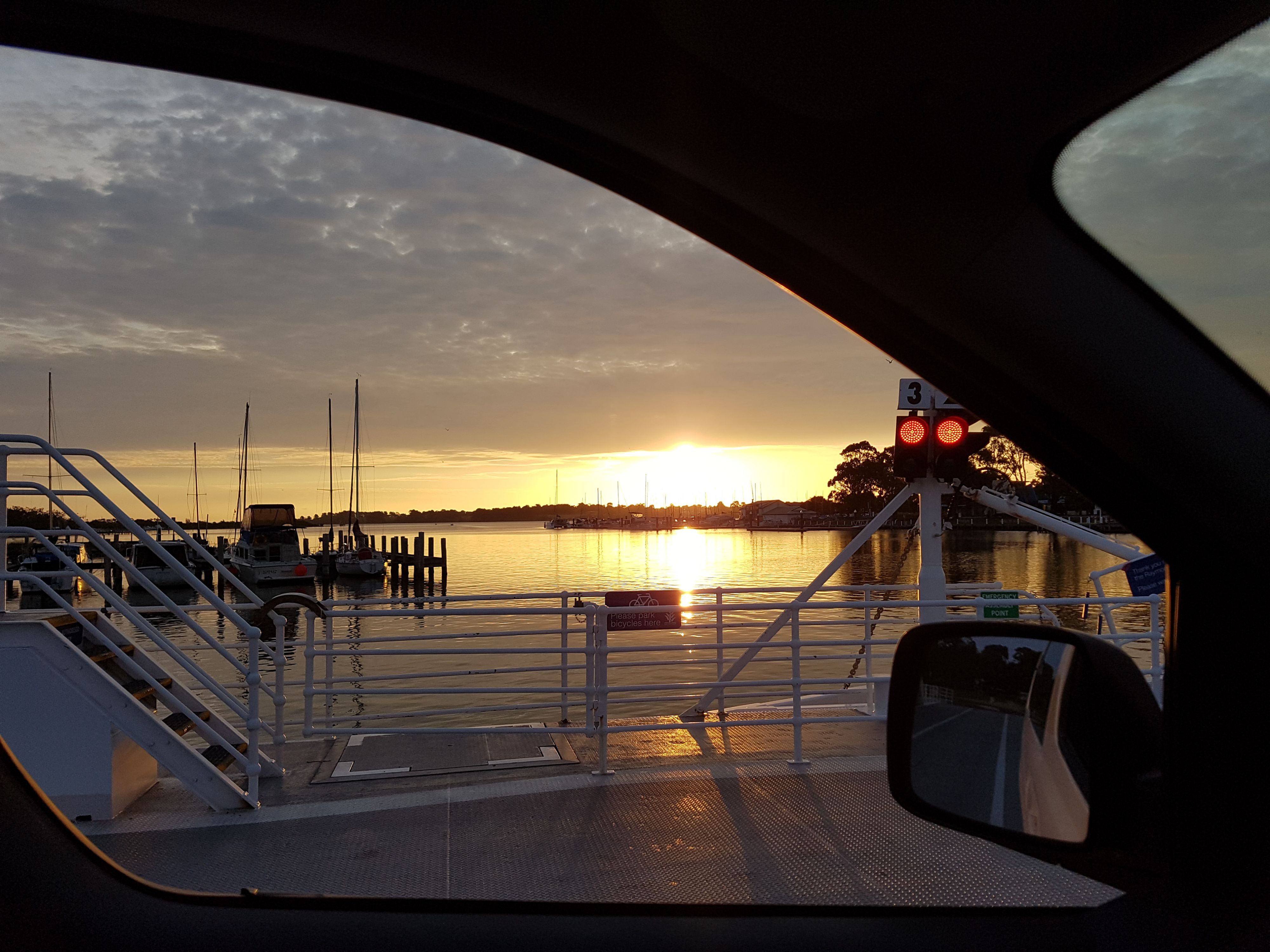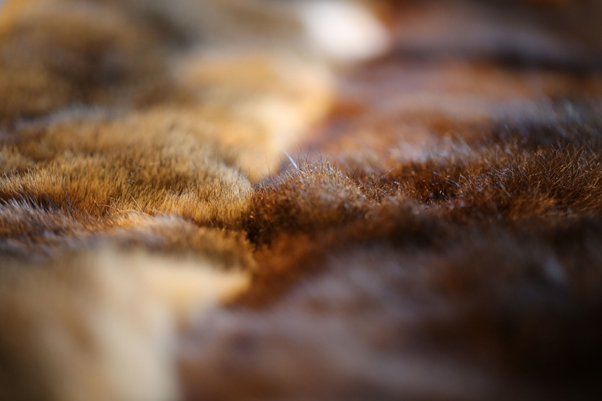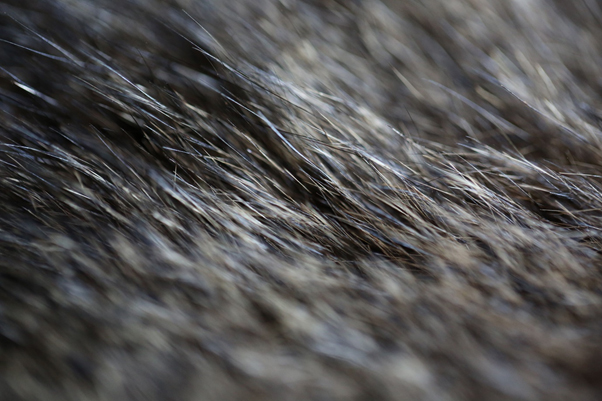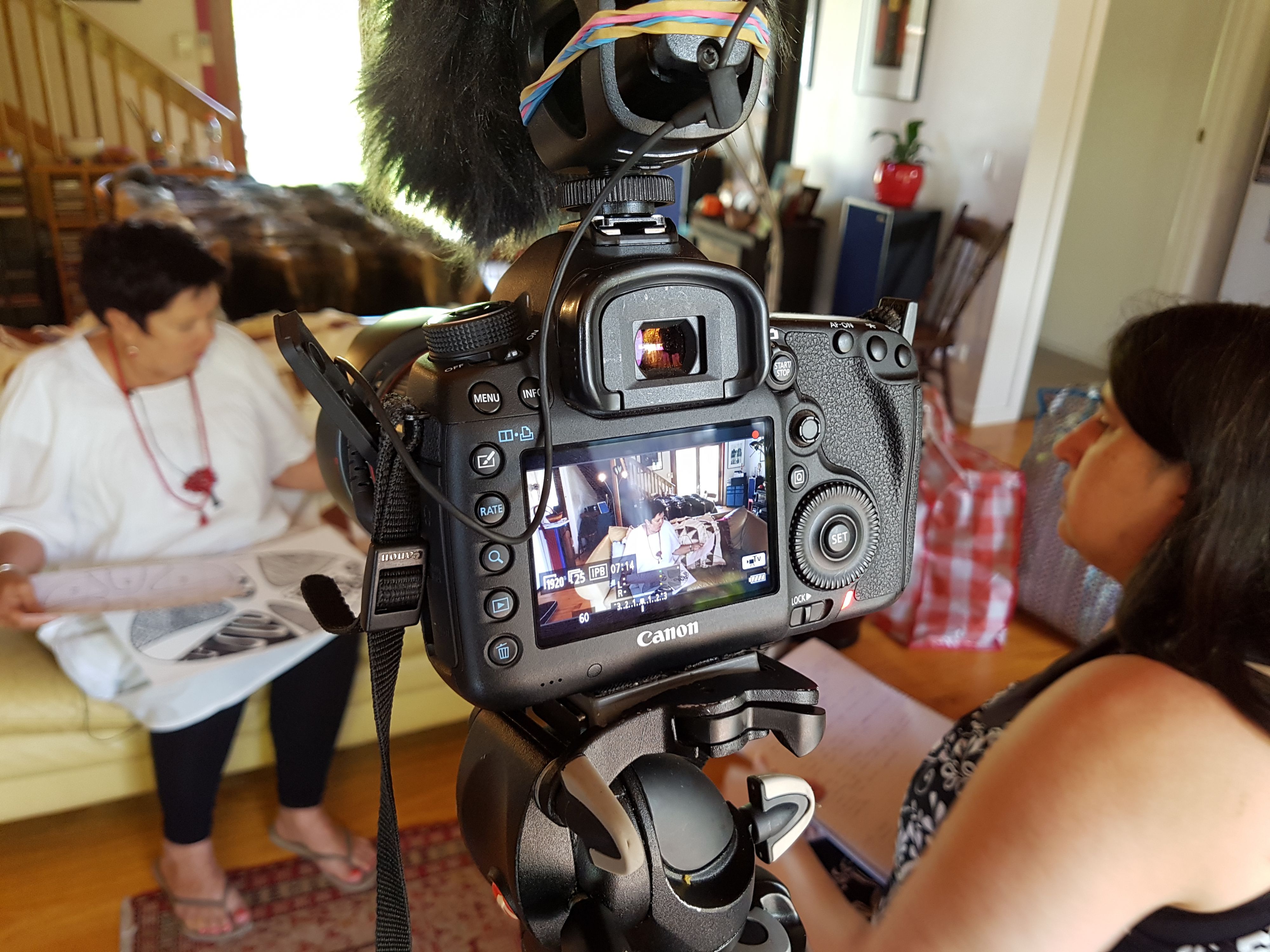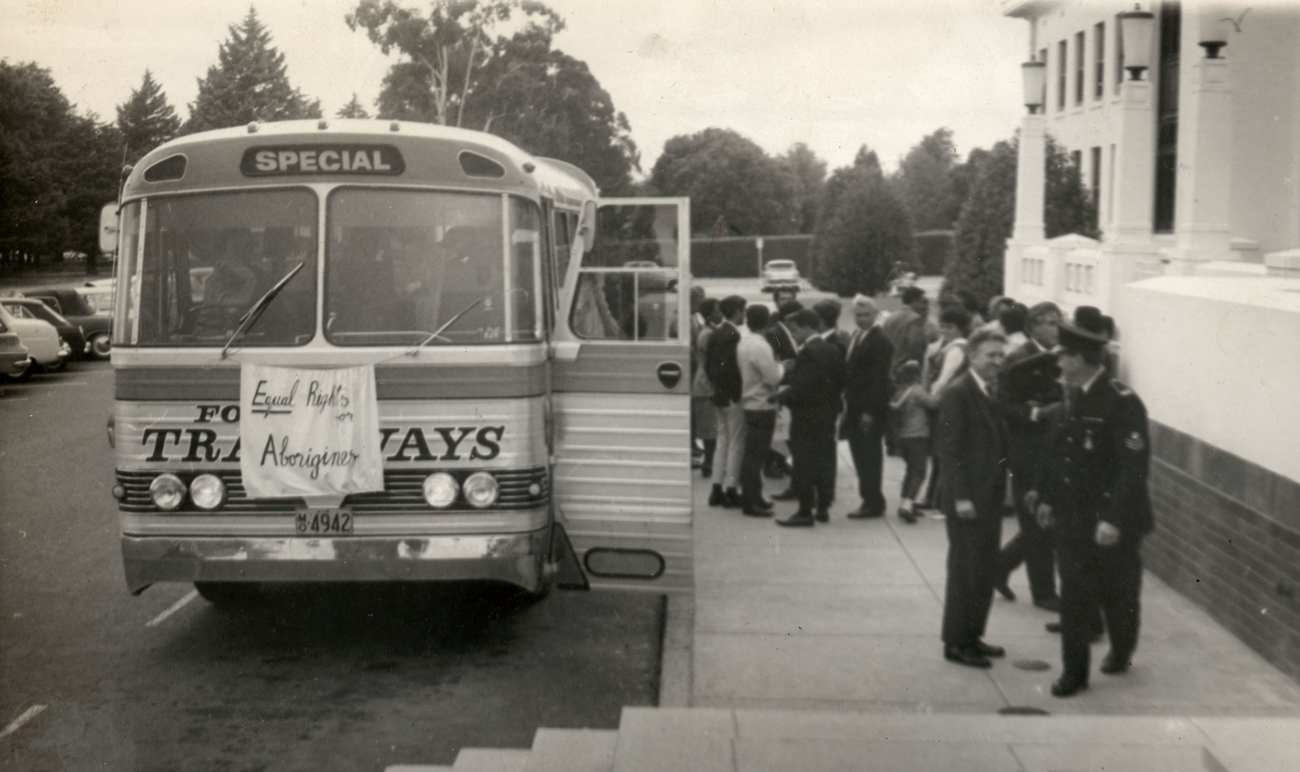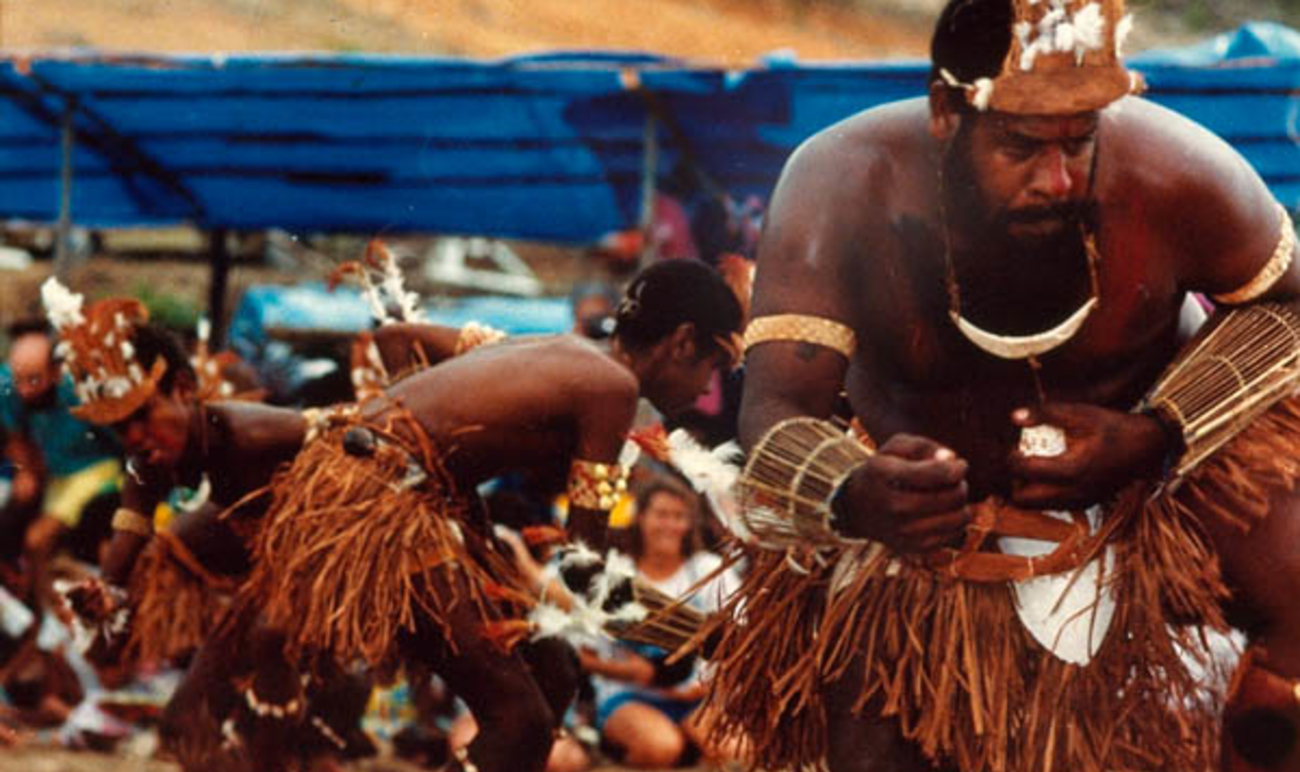A few hundred years ago, a newborn Aboriginal baby in southeast Australia would have likely been protected from the extreme cold and wet weather by a possum skin cloak.
These garments lasted a lifetime. Several possum skins sewn together would become 20 skins or more as the baby grew in to adulthood. The non-fur side would be inscribed with stories and totems making their possum skin cloak not only a lifetime garment, but a wearable life story.
AIATSIS is located in the ACT and is surrounded by possum skin cloak country. But not since former Chair, Ken Colbung, has a skin cloak featured regularly in any kind of official capacity here at the Institute and there are no such garments in our Collection. So I was excited to be asked to document the creation of the official, and overdue, AIATSIS possum skin cloak!
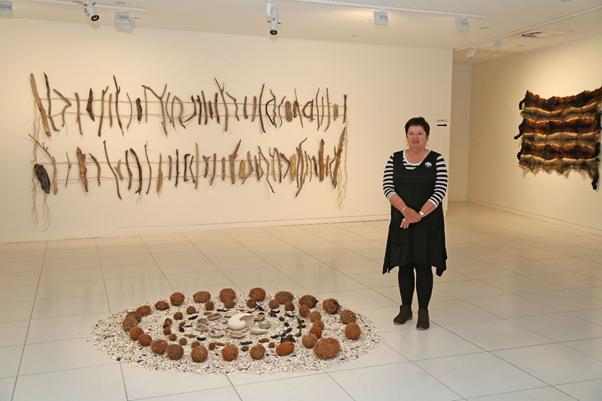
Lee Darroch created the AIATSIS possum skin cloak. She is pictured here at her exhibition as part of Wominjeka, at the Koorie Heritage Trust, Melbourne. A possum skin cloak features on the wall behind her to the right.
Lee Darroch created the AIATSIS possum skin cloak. She is pictured here at her exhibition as part of Wominjeka, at the Koorie Heritage Trust, Melbourne. A possum skin cloak features on the wall behind her to the right.
I’ve seen possum skin cloaks in person three times. Once during a seminar by AIATSIS Senior Curator, Alana Garwood-Houng, and at an exhibition of works by Lee Darroch; the two people who spearheaded the creation of the AIATSIS possum skin cloak. The third time was this trip, where Alana and I went to the home and studio of Lee on Raymond Island in East Gippsland.
The body of water separating our accommodation from Raymond Island was a thin sliver of Eagle Point Bay, about 100m wide. It’s a natural barrier against overdevelopment. There is a ferry which goes back and forth all day carrying people and vehicles across. We drove on to the ferry with camera equipment and lunch supplies in tow to meet Lee at her place. Her house is vibrant and colourful with lots of interesting bits and pieces and a friendly labradoodle named Noah.
The first thing we did was to go for a walk down by the water. I had the Canon DSLR with a shotgun mic set up on a monopod so I could quickly move, snap and record as we walked around. Walking is part of Lee’s daily routine and she uses the walks to look for natural materials for art projects.
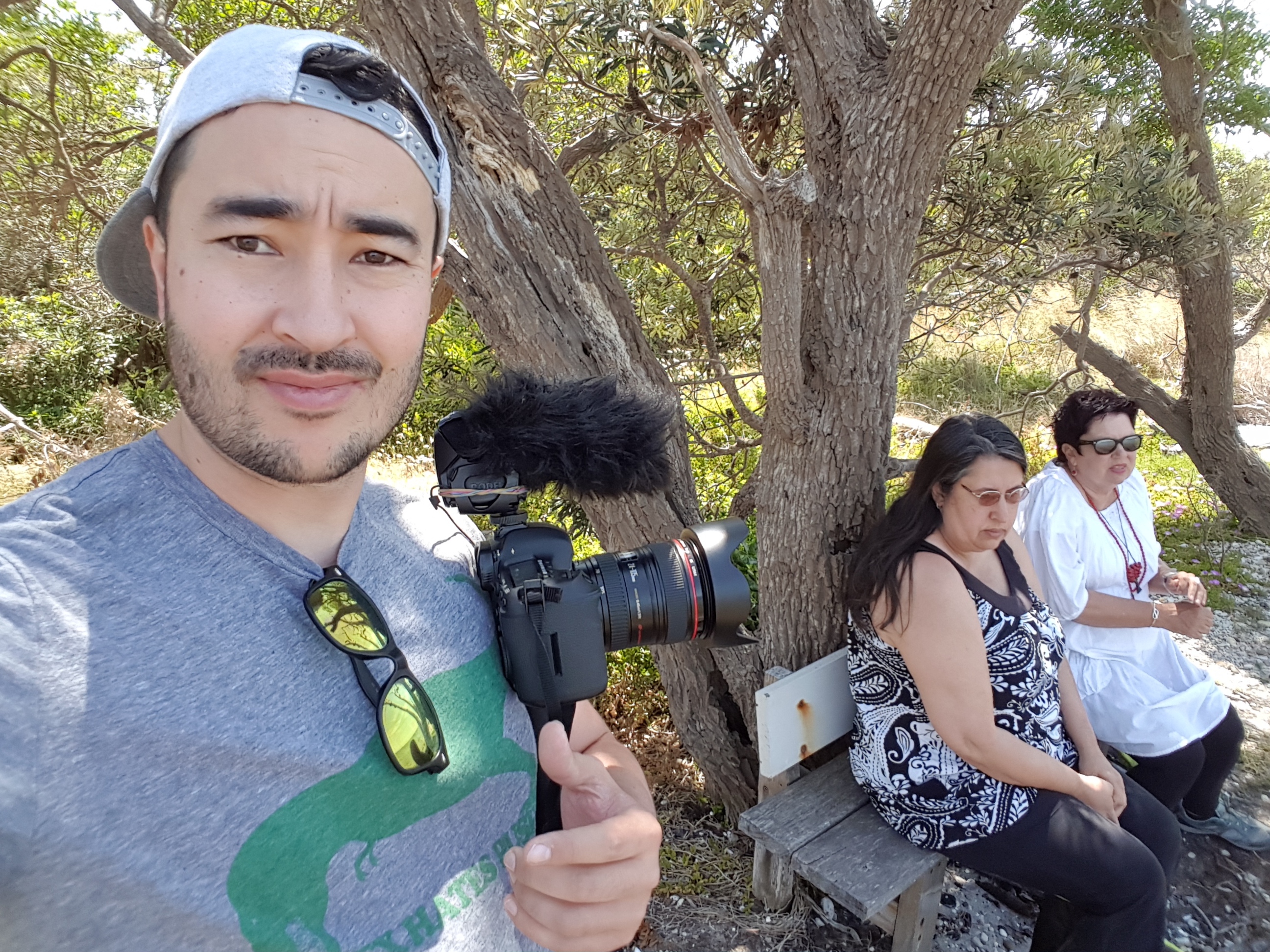
Walking around Raymond Island. Alana Garwood-Houng is pictured to my right sitting next to Lee Darroch. FYI cap is backward to avoid hitting the camera when I look through the viewfinder.
Walking around Raymond Island. Alana Garwood-Houng is pictured to my right sitting next to Lee Darroch. FYI cap is backward to avoid hitting the camera when I look through the viewfinder.
Originally from Lockington, Lee is extremely in-tune with the environment. She told us about all the plants, wildlife, tides and seasonal changes. She got us to taste some fresh coastal dill and samphire, the latter is apparently in vogue in Melbourne eateries now. It was pretty good - very juicy and salty! On the way back to the house, Lee pulled off huge chunks of this beautiful amber coloured resin that was bleeding out of a tree. She told us that this was going to be used on the AIATSIS possum skin cloak.
Back at the house, Lee showed us the progress on the cloak. It was enormous, made of 30 skins sewn together. The skin side was a clean off-white colour, the design yet to be burnt and painted on. The fur side was luxuriously soft and had various shades of brown, black and grey. Ironically, the skins are ethically sourced from New Zealand where possums are pests, not from Australia where they are a protected species.
The graphic designer at AIATSIS, Dan, requested textural images of the cloak with blurry edges. I had just the lens! The Canon EF 100mm f/2.8L Macro IS USM is just a joy to use on miniature subjects. It has a small focal length (100mm), and a 9 blade aperture with max f stop of f/2.8 creating vivid, shallow depth of field with stunning bokeh.
In English this means a lens designed for capturing things 10cm or closer, with vivid, narrow focus and beautiful blurry backgrounds.
After that it was time to set up to shoot some video for the first interview. The lounge was in front of the window so I had Lee sit there to use the natural light, and just added a key light and a back light. I use Cineroid LM200’s. They are great, extremely portable LEDs. I kept the colour temperature cool to balance the warm natural light and tones of the room. I had the cloak draped over the studio (the dining table) in the background.
In the interview, Lee talked about the genesis of her cloak-making and explained the design for the AIATSIS cloak. She has really studied AIATSIS’ history and functions. I don’t want to give away too much, but there are six sections to the design, all representing something about the history or identity of AIATSIS.
The second interview was staged outside in the courtyard. Light was abundant and hot! No need for extra lights, just speed so we could stop baking in the sun. In this interview, Lee talked about some of the cloak-making workshops she runs and the benefits to participants. Lee was a social worker before becoming an artist and she explains that for Aboriginal people, making and wearing cloaks can have an incredible healing quality.
Day two of filming and photographing was all about capturing some of the cloak-making processes. First up was preparing the resin. Lee then demonstrated how she burns the designs on to the possum skins. After that, Lee prepared the ochre by grinding it in a mortar and pestle, and then combined it with the cooled resin to create the right consistency for painting.
We needed both video and stills of these processes, so it was a bit frantic considering some of them couldn’t be repeated easily if I missed it. Thankfully the Canon 5D III is pretty dextrous in these situations and switching modes and lenses is fairly straightforward so I think I got all the important stuff.
The last thing to do was get some shots of the AIATSIS possum skin cloak being worn. I convinced a reluctant Alana to be the model and we got some photos with Lee’s garden as a fitting backdrop. And that was a wrap! Lee and her husband kindly put on a BBQ dinner for us as a farewell.
The next day we started the long journey back with lots of material to use in the online story.
